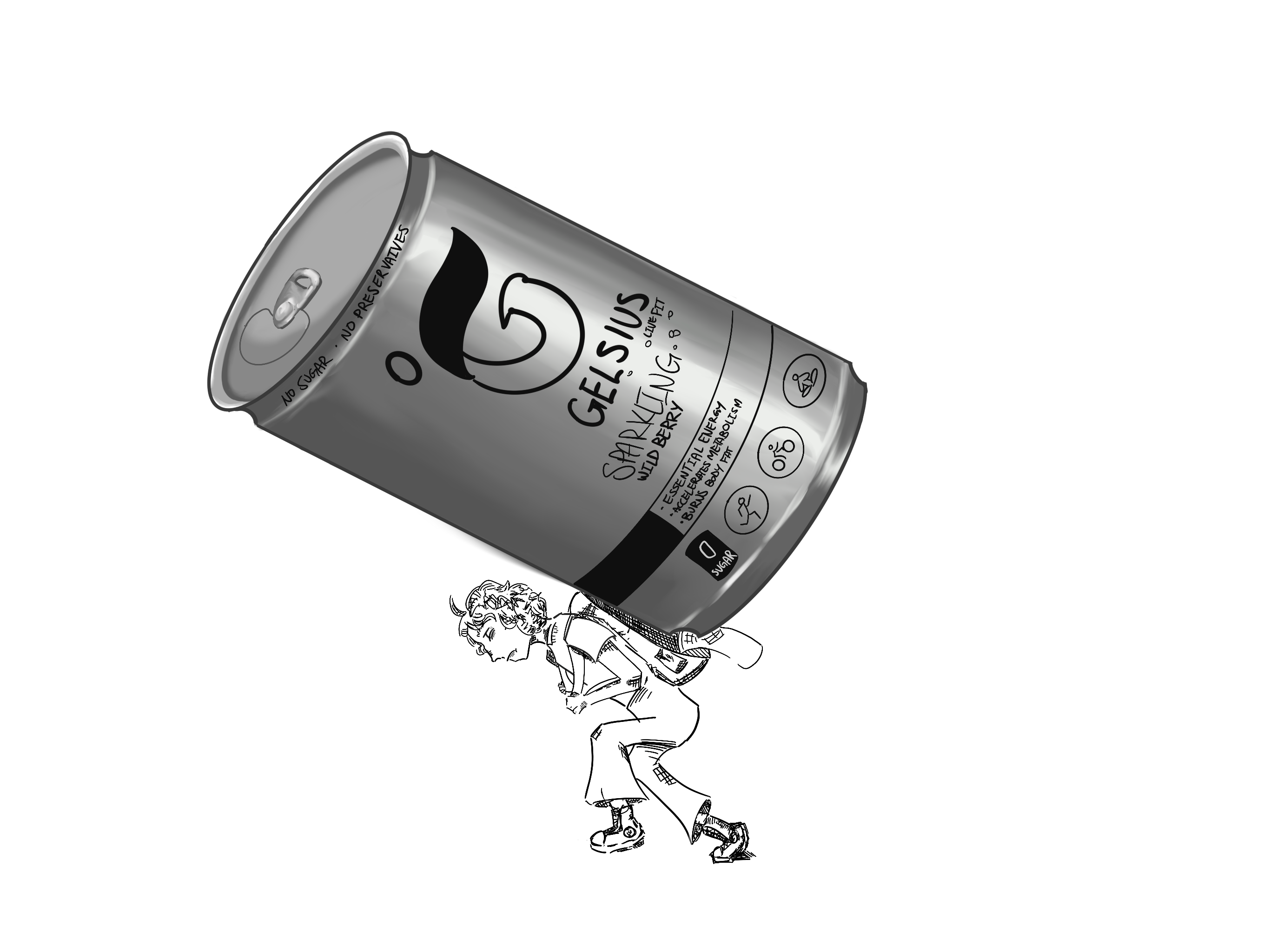Don't be so keen on caffeine
February, 2024
In the past few years, students may have observed that cans of Celsius, Monster, and similar energy drinks have become as prevalent as water bottles in classrooms and hallways. According to the National Center for Complementary and Integrative Health (NCCIH), there has been a recent surge in the consumption of these drinks, particularly among teenagers and young adults, to whom energy drink companies gear their advertising. These colorfully adorned cans and intriguing flavorings are marketed to this age group with the assertion that they provide a temporary energy boost, improving physical and cognitive performance. This claim is not entirely void, considering a classic 12-ounce can of Celsius packs a shocking 200 milligrams of caffeine, roughly double the amount in a cup of coffee.
Although students tend to reach for caffeinated products during the school day for the increased energy and concentration they may provide, the Harvard T. Chan School of Public Health finds that excessive consumption of caffeine can have side effects like insomnia, heart complications, anxiety, and even seizures. Due to these possible complications, the American Academy of Pediatrics recommends consuming no more than 100 mg of caffeine per day for adolescents ages 12-18 — a standard that is difficult to maintain when almost one-third of teens in this age group consume energy drinks regularly, according to the NCCIH. To make sure kids don’t over-consume caffeine, there needs to be more federal and school level regulations to cap the caffeine content in these beverages and label them with accurate warnings.
Even though some of these drinks contain twice the recommended amount of daily caffeine content for teens, there are no current FDA regulations regarding the amount of caffeine in the drinks, as they are sold as “nutritional supplements” and are not regulated as strictly as conventional consumables. As the labels of these beverages often don’t reveal the exact amount of caffeine in each drink, teens are likely to pile on too much caffeine over the course of the day, negatively impacting their health. In 2011, the CDC found that 1,499 teens aged 12 to 17 years went to the emergency room for energy-drink-related emergencies. If this sector goes unregulated, those numbers could skyrocket as these drinks grow in popularity.
Unfortunately, the rampant issue of unregulated caffeine contents goes beyond canned energy drinks and extends to common beverages such as restaurant lemonade. In fact, a large-size Panera Charged Lemonade contains about 390 milligrams of caffeine, and the company has already been charged with two lawsuits from heavily-caffeinated lemonade-induced deaths. Many consumers were not aware of the amount of caffeine that was contained in the drink and the severity of consuming that much. As a result, many can unconsciously reach for refills and have extremely excessive amounts of caffeine without realizing. To limit cases of caffeine overdose — which, for healthy adults, would be consuming more than 400 mg per day — beverage industries should be forced to place labels on their products specifying how much caffeine is in their product and how many servings can be safely consumed in a day.
PHS should take action to prevent students from overconsuming caffeine, but right now, the USDA nutrition standards do not restrict the sale of caffeinated beverages in high schools. The CDC states that about 12 percent of secondary schools in the country sell energy drinks in vending machines and school stores, making it easier for students to access these highly caffeinated drinks. To help ensure that students aren’t exceeding their caffeine limits, PHS should adopt caffeine caps on the products sold in school, limiting caffeine content in drinks to half the recommended daily intake for teens. Additionally, caffeinated drinks should only be available in the school cafeteria and Tiger Cafe. By doing so, PHS staff can easily monitor the number of drinks students have purchased in a day and control a student’s intake. It also prevents students from purchasing these drinks during times when the cafeterias are closed, preventing them from consuming caffeine in the afternoon and possibly disrupting their sleep schedule. High schools around the country implementing these policies might influence major energy drink companies to add less caffeine into their products in order to meet the cap. In a world where caffeine is abundant in many common beverages, it is important that teens are aware of the amounts they are consuming and can make informed decisions.